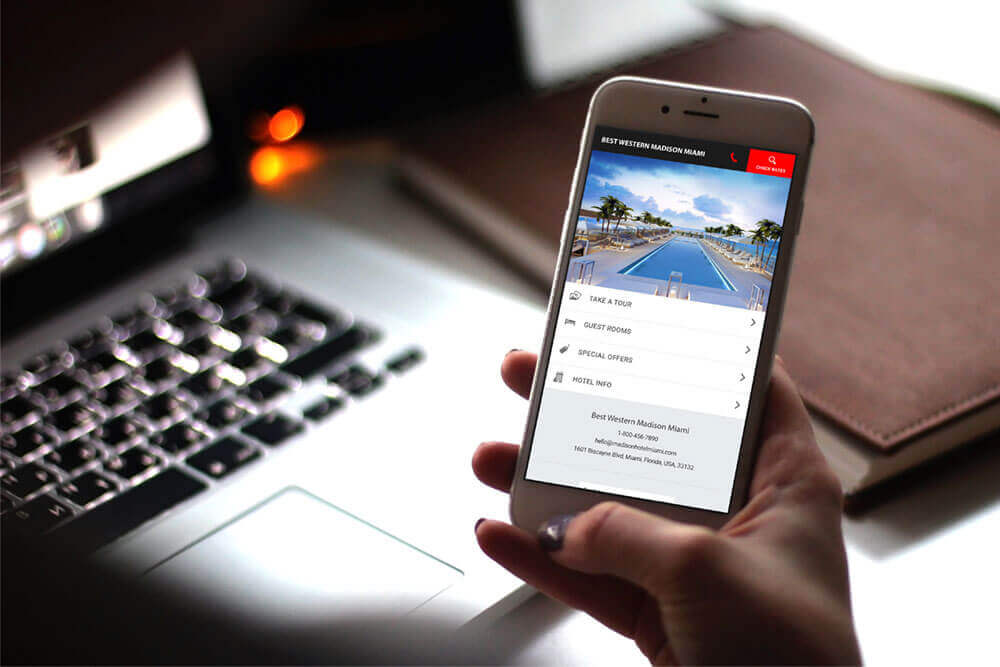
The fastest way to improve your hotel booking rates on mobile devices is to ensure that the customer experience is streamlined.
NB: This is an article from Sojern
By 2021, digital travel sales are expected to make up more than $219 billion. And according to Sojern’s own data, travel searches are continuing to grow on mobile devices, with a growth rate that is 43% higher YoY compared to the number of traveler searches that happen on desktop. Our data also shows that more than half of all of hotel reservations are now taking place on mobile. Is your hotel ready to accept mobile bookings?
Why a mobile-first experience matters
For mobile transactions to work, the experience needs to be smooth for both the hotelier and their customer. The rise of responsive design, flexible layouts and images that shifted based on screen size, gave customers a better experience, but not the best experience. Blockers to successful online booking included ill-fitting images, difficult to follow content, slow-to-load images and glitchy, sound-skewed video delivery. This is important for hoteliers because when people have a negative brand experience on mobile, they are 62% less likely to purchase from that brand again in the future.
With mobile-first designs, you’re designing for the smallest screen first and working your way up to larger screens. It is the art and science of boiling down your design to ensure that the “smallest of the designs will have only the essential features,” says design writer, Ben Gremillion. The search engines love sites that have mobile-first designs (see Google’s change to prioritizing those organizations who embrace the AMP model). Not only can you serve exactly the right site to the right device to ensure that the experience is what it needs to be in order to increase booking rates, but hotel marketers can track and attribute their online advertising efforts more effectively.
What customers want with their mobile booking experience
Even if you get your site looks amazing and quickly loads, customers look for specific things when deciding to book on mobile. Including:
1. A short purchase journey.
Mobile customers behave differently than desktop customers. Unlike a customer on a laptop, a mobile customer wants to take care of business then and there.
2. Speed.
No matter what, speed is your friend. If your system can’t offer up an easy-to-navigate, personalized recommendation that gets a customer from intent to conversion without frustration, the sale may end up elsewhere. If your potential customer is on a mobile device rather than a laptop, 53% of them are going to abandon if the site takes longer than three seconds to load.
3. Appropriate retargeting, but not too much.
Most visitors won’t convert on their first visit, but with appropriate retargeting, they will come back for more. Place ads in front of people who’ve already visited your website, with the goal of attracting them back to book and convincing them not to abandon their carts. Meliá Hotels International, a Sojern client and one of the largest hotel companies in the world, drove more than $1.5M in incremental revenue using retargeting. Read the whole case study here.
4. Easy payments.
Different consumers will gravitate toward the easiest way to pay (for them). Each may have a different preference, but ultimately the best payment is the one that won’t force them to dig out their wallet (for 28% of people, “complicated checkouts” are the reason they give up). Give them three choices instead of just one, and the likelihood of them converting increases up to 30%.
Ultimately, what gets a customer in a hotel’s front door?
As a hotel marketer, you can use data to anticipate what your customer is going to want. Help customers book with you by learning all about your potential consumer, inspire them with the ease in which they can book with you.




